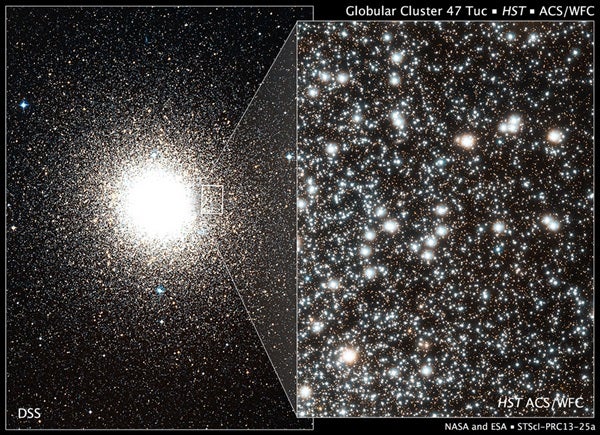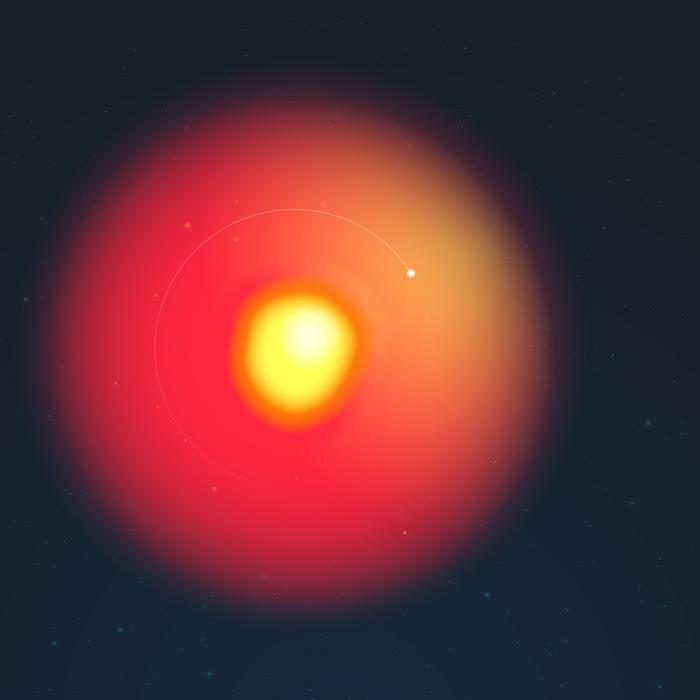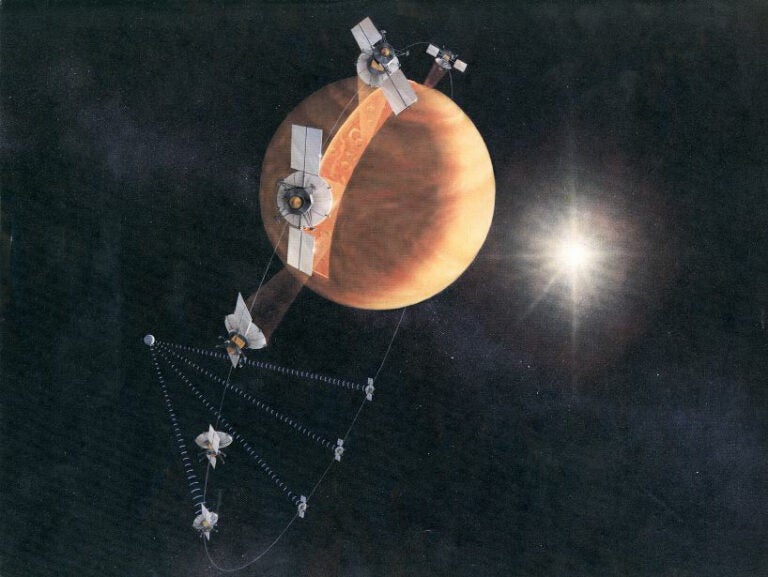Researchers led by Harvey Richer of the University of British Columbia in Vancouver combined recent Hubble observations with eight years’ worth of data from the telescope’s archive to determine the motions of the stars in the globular cluster 47 Tucanae, which is located about 16,700 light-years away in the southern constellation Tucana.
The analysis enabled researchers, for the first time, to link the movement of stars within the cluster with the stars’ ages. The two populations in 47 Tucanae differ in age by less than 100 million years.
“When analyzing the motions of stars, the longer the time baseline for observations, the more accurately we can measure their motion,” said Richer. “These data are so good, we can actually see the individual motions of the stars within the cluster. The data offer detailed evidence to help us understand how various stellar populations formed in such clusters.”
The Milky Way’s globular clusters are the surviving relics from our galaxy’s formation. They offer insights into the early history of our galaxy. 47 Tucanae is 10.5 billion years old and one of the brightest of our galaxy’s more than 150 globular clusters. The cluster measures about 120 light-years wide.
Previous spectroscopic studies revealed many globular clusters contain stars of varying chemical compositions, suggesting multiple episodes of star birth. This Hubble analysis supports those studies but adds the stars’ orbital motion to the analysis.
Richer and his team used Hubble’s Advanced Camera for Surveys to observe the cluster in 2010. They combined those observations with 754 archival images to measure the change in position of more than 30,000 stars. Using these data, they could discern how fast the stars move. The team also measured the stars’ brightness and temperatures.
This stellar archaeology identified the two distinct populations of stars. The first population consists of redder stars, which are older, less chemically enriched, and orbiting in random circles. The second population consists of bluer stars, which are younger, more chemically enhanced, and moving in more elliptical orbits.
The lack of heavier elements in the redder stars reflects the initial composition of the gas that formed the cluster. After the most massive of these stars completed their stellar evolution, they expelled gas enriched with heavier elements back into the cluster. This gas collided with other gas and formed a second more chemically enriched generation of stars that was concentrated toward the cluster center. Over time, these stars moved slowly outward into more elliptical orbits.
This is not the first time Hubble has revealed multiple generations of stars in globular clusters. In 2007, Hubble researchers found three generations of stars in the massive globular cluster NGC 2808. But Richer’s team is the first to link stellar dynamics to separate populations.










